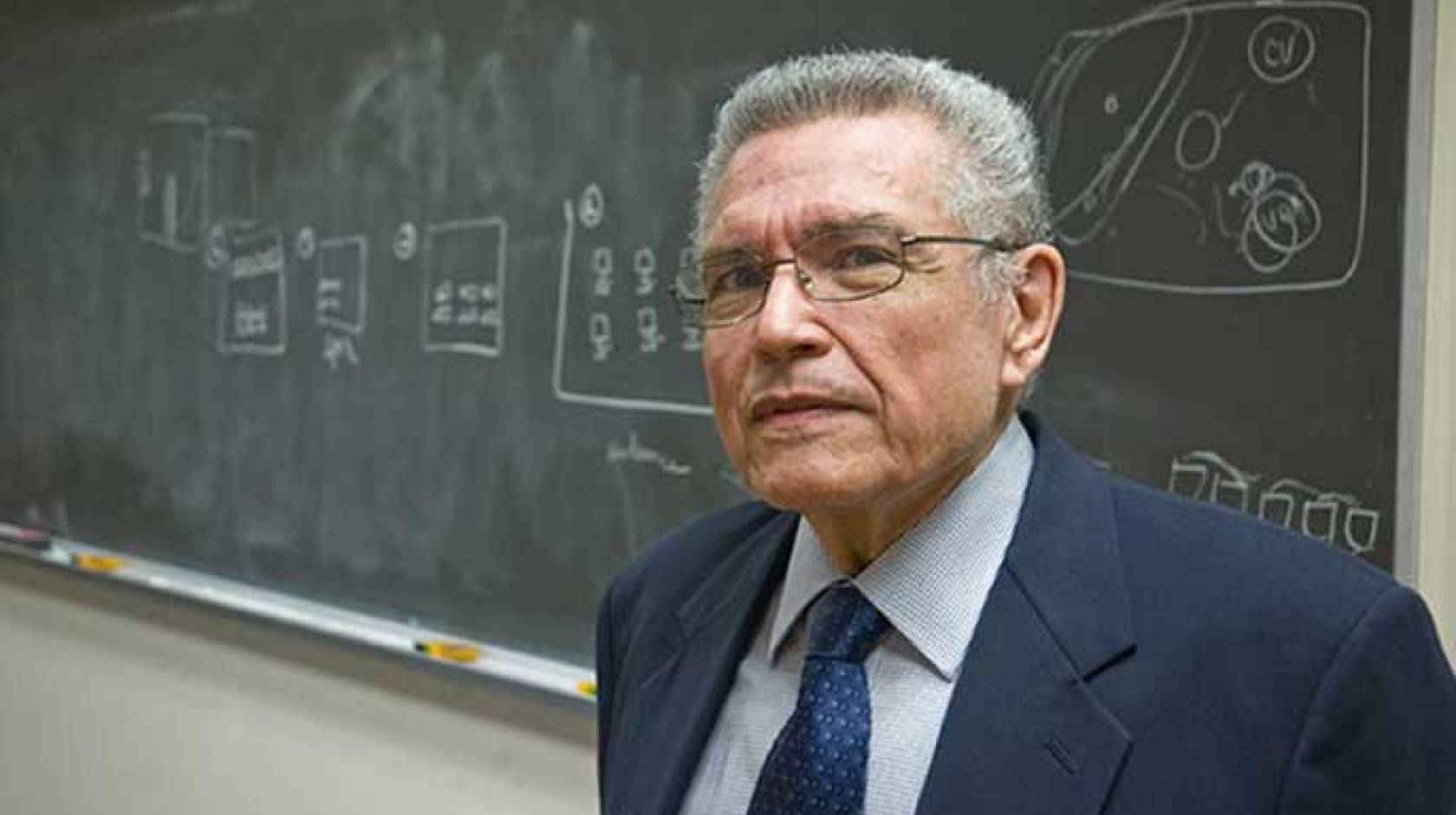Robert Monroe, UC San Diego

A satellite that will be positioned between Earth and the sun to measure the solar energy reflected back to space by Earth as well as the infrared radiation emitted by the planet is scheduled for launch Feb. 8 or 9. Researchers at Scripps Institution of Oceanography proposed the scientific objectives and began designing the instrument payload for the mission nearly 17 years ago.
Data gathered by the Deep-Space Climate Observatory (DSCOVR) are essential to determining Earth’s energy budget, which is the fundamental driver of climate. Another suite of solar instruments designed and built by the NASA’s Goddard Space Flight Center will observe solar flares, solar wind, and the sun’s magnetic field variations during solar flare activity. These phenomena can disrupt a wide variety of processes on Earth, from satellite communications and control to electrical distribution systems.
Francisco Valero, a Scripps Distinguished Research Scientist Emeritus who served as the original DSCOVR mission principal investigator, said the satellite will be the first to observe Earth from a vantage point 1.5 million kilometers (932,000 miles) away known as Lagrange-1 point (L-1). The L-1 point is where Earth’s gravity reduces the sun’s gravity such that the orbital angular velocity of an object positioned there matches the orbital angular velocity of Earth. A spacecraft at the L-1 point thus remains on a line connecting Earth and the sun. Thereby at L-1, a satellite maintains a steady view of Earth, providing a constant view of the entire sunlit portion of the planet.
The mission is expected to join other Scripps research efforts that have provided unprecedented views of nature, such as the Argo network that provided the first comprehensive observations of all world oceans simultaneously or the bathymetric research of scientists at the Cecil H. and Ida M. Green Institute of Geophysics and Planetary Physics (IGPP) at Scripps that are the basis of most seafloor maps in use. DSCOVR’s data are expected to advance understanding of atmospheric physics, aerosol chemistry, and several other climate-related fields.
NASA, NOAA, and the U.S. Air Force are sharing the $150 million cost of the refurbished satellite and its launch operations. All the original instrumentation for Earth and solar research remain a part of the payload.
DSCOVR will be launched aboard a rocket built by SpaceX. The launch date is weather-dependent and subject to change.
“Two DSCOVR instruments will continuously observe the full, integrated and simultaneously spatially resolved Earth as it rotates around its axis, one of the instruments will see the entire planet all at once and measure total radiation (energy) The other instrument also sees the entire planet all at once but divided into four million pixels with a resolution of about 10-15 kilometers (6.3-9.3 miles) simultaneously. It’s a unique ability of DSCOVR,” Valero said.
The satellite will also collect other climate system data, including atmospheric dynamics, cloud physics, aerosols, and surface remote sensing. The integration of DSCOVR observations with data from other satellites, in particular NASA’s Clouds and Earth’s Radiant Energy System (CERES), is expected to contribute to the solution of long-standing questions about how much solar energy the planet absorbs and radiates back to space in the form of infrared radiation. The difference between these quantities is a measurement of the planet’s radiation/energy balance. A long-term positive energy budget average — in which more energy is absorbed than is radiated back to space — indicates warming. Negative long-term average budget means cooling.
Valero has been working on aspects of the mission for nearly 17 years. The satellite was originally named Triana after Rodrigo de Triana, the member of Christopher Columbus’ crew to first see the Americas. In 1998, Vice President Al Gore suggested to NASA that a satellite capable of observing the entire sunlit side of the planet would be both educational and inspirational for younger generations.
NASA renamed the satellite mission DSCOVR in 2000. As part of this effort, the team, in partnership with Lockheed Martin built a sophisticated telescope/spectra-radiometer known as the Earth Polychromatic Imaging Camera (EPIC) to determine the components of the atmosphere including aerosols that contribute to the absorption, reflection and emission of radiation. The team also designed an instrument called the National Institute of Standards and Technology (NIST) Advanced Radiometer, or NISTAR, built and calibrated at NIST to measure reflected solar and emitted infrared planetary radiation.
A 2000 National Research Council review of the science objectives of the mission stated “The task group found that the [DSCOVR] mission will complement and enhance other missions because of the unique character of measurements made from the L1 point, which allow continuous imaging of the full sunlight disk of Earth and monitoring of solar wind properties relevant to space weather.”
By 2001, the satellite and its science instruments had been built, tested, and calibrated, but despite the reviews that validated the importance of the Triana/DSCOVR scientific objectives, the satellite was put into storage at a NASA facility in Greenbelt, Md. where it sat for eight years. It was sidelined in part by a lack of available spacecraft to deliver it to its destination and by funding setbacks.
Valero has joined the DSCOVR research team at NASA’s Langley Research Center in Virginia. For the mission, Valero serves as a senior adviser and science planner.
“The NASA Langley Research Center (CERES) has developed the most accurate and sophisticated approach to date to study Earth’s radiation budget using satellite data,” said Valero.
“DSCOVR was ahead of its time and still is,” said Charles Kennel, who was director of Scripps when the institution’s involvement with the project first began.
“Even 17 years on, it provides a unique capability to study the earth’s radiation balance, the source of all climate change. And there is a practical bonus. DSCOVR’s orbit upstream of Earth in the solar wind enables detection of solar magnetic storms before they hit the earth. DSCOVR provides early warning of telecommunication and satellite outages.”
“Most of all, DSCOVR is a story of a man and an idea, of Francisco Valero, who never lost sight of a grand scientific vision and never gave up,” Kennel added.

